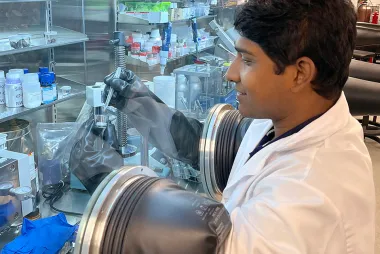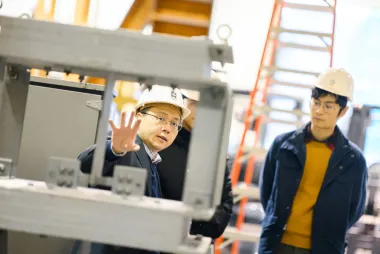Fast-tracking mining in BC without repeating past mistakes

BC finds itself at a crossroads as global demand for critical minerals surges, driven by the clean energy transition and competition with China. The province is fast-tracking mining projects to capitalize on its rich deposits of copper, nickel and rare earth elements essential for electric vehicle batteries, solar panels and wind turbines.
But questions remain about whether this acceleration can happen while respecting Indigenous rights and without cutting environmental corners.
We spoke with two UBC experts: Dr. John Steen, director of the UBC Bradshaw Research Institute for Minerals and Mining (BRIMM), and Dr. Carol Liao, UBC Sauder Distinguished Fellow and co-director of the Centre for Climate Justice. Together, they unpack the complexities of developing a competitive critical minerals sector while upholding Indigenous consent.
What does “fast-tracking” critical minerals development mean in BC and what are the risks if we get it wrong?
John Steen: When the government announced fast-tracking for 18 mining and energy projects in March 2025, four were mining projects. Fast-tracking means allocating more resources to expedite reviews and remove duplication between government levels. There’s been no change to legal compliance. The biggest challenge is obtaining Indigenous rights-holders’ consent.
Carol Liao: Fast-tracking means streamlining permitting, reducing regulatory timelines and accelerating decisions on projects deemed strategically important for clean energy transition. It can include compressing environmental assessment timelines or advancing permits ahead of full consultation. If done poorly, fast-tracking can pose significant risks. Environmentally, it can lead to insufficient baseline data and inadequate long-term impact mitigation. Legally, it risks violating constitutional consultation obligations, potentially triggering court challenges. Socially, compromising on Indigenous consent and engagement erodes trust and undermines the legitimacy of decision-making processes.
Can BC accelerate critical minerals projects and still uphold Indigenous consent or are we headed for more legal conflict?
JS: The Tahltan’s involvement in the accelerated Eskay Creek and Red Chris projects shows fast-tracking can work with Indigenous leadership and benefit sharing. These model how companies should work with Indigenous people through true collaboration, not just financial agreements. Early engagement and Indigenous leadership are essential.
CL: Acceleration cannot mean bypassing consultation obligations under Section 35 of the constitution. Many fast-tracking efforts are layered onto outdated legal structures not aligned with the United Nations Declaration on the Rights of Indigenous Peoples (UNDRIP), which BC has codified. Meaningful consent and engagement means co-developing frameworks with First Nations from the start, not as an afterthought. Anything less returns to colonial patterns dressed in green language.
Where is B.C. falling behind when it comes to building a competitive critical minerals sector?
JS: There’s potential for a more ambitious strategy beyond resource extraction toward developing an internationally leading mining clean-tech sector. BC is a global mining technology centre. Companies like Minesense and Motion Metrics improve operational efficiency and reduce environmental impacts. Startups like Ideon, Arca and Nphyla develop efficient ore body discovery and cleaner metal processing. Growing this tech sector could make BC a global mining clean-tech hub.
How do B.C.’s mining laws align or clash with Indigenous rights?
CL: The BC Supreme Court found in 2023 that the Mineral Tenure Act inadequately addressed First Nations rights and title, granting 18 months to fix the process. The new consultation framework implemented in March 2025 requires consultation before claims registration, but critics argue it perpetuates colonial decision-making. The Chief Gold Commissioner still makes final decisions without independent oversight or clear consultation standards. True UNDRIP alignment requires co-developing pathways and co-resource management and partnerships with Indigenous governments from the beginning.
If you could change one thing about how BC approaches critical minerals development, what would it be?
JS: Balancing consultation, review and mineral production to meet global demand will be key to success. Fast-tracked projects like Red Chris and Eskay Creek show this balance is possible through true collaboration with rights-holders.
CL: Shift the starting point. This means rethinking who defines critical projects, sets timelines and makes final decisions. A consent-based nation-to-nation model would fulfill legal obligations while creating a more durable and investable critical mineral sector.



